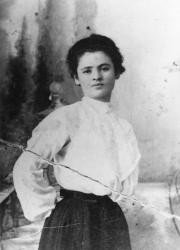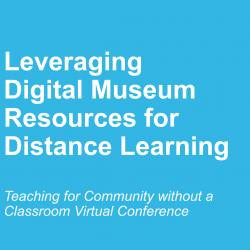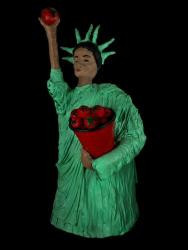Philippa Rappoport
I work in education and engagement, teacher professional development, and outreach at the Smithsonian Office of Educational Technology (OET), and have a particular interest in developing and producing trainings, programs, teaching techniques, and platforms that foster deep learning and contribute knowledge to improve practices in museum and preK-16 education and engagement. At OET over the last decade+, I created digital assets for schools, families, and new immigrant English Language learners to complement teacher professional development and pan-Smithsonian programming, including Learning Lab teaching collections, YouTube videos with tradition bearers, a handmade family stories book-making website, and online heritage tours.
Philippa Rappoport's collections
Activism and Change: Clara Lemlich and the New York Shirtwaist Strike of 1909
 Philippa Rappoport
Philippa Rappoport
Teaching for Community without a Classroom: Leveraging Digital Museum Resources for Distance Learning
 Philippa Rappoport
Philippa Rappoport
A Fusion of Culture and Identity: Joe Bataan’s Latin Boogaloo Music
 Philippa Rappoport
Philippa Rappoport
Digital Museum Resources for the High School Ethnic Studies Classroom (City of Austin Parks & Recreation)
 Philippa Rappoport
Philippa Rappoport
Domingo Ulloa's "Braceros": and "Bittersweet Harvest": Using Art and Historical Documentation to Deepen Understanding
 Philippa Rappoport
Philippa Rappoport
Inquiry-Based Learning at Its Best Using Digital Museum Resources: A Presentation for NCSS2020 Conference "Advancing Social Justice"
 Philippa Rappoport
Philippa Rappoport
Classroom Activity Using Images of Immigration and Identity from the National Portrait Gallery, the New York Times, and the Smithsonian American Art Museum
 Philippa Rappoport
Philippa Rappoport
Puerto Rico’s Fragile Modernity: An Exploration of Francisco Rodón's Portrait of Luis Muñoz Marín, using Global Thinking Routines
 Philippa Rappoport
Philippa Rappoport
Nicholasa Mohr and New York's Puerto Rican Migration
 Philippa Rappoport
Philippa Rappoport
Culture and Aesthetics Meet Physics: Why Soviet and American Spacesuits Look Different
 Philippa Rappoport
Philippa Rappoport
Migrations in American History: The Making of "Many Voices, One Nation"
 Philippa Rappoport
Philippa Rappoport
Curating Digital Museum Resources for the Classroom (Texas ASCD Ignite 19 Conference Session)
 Philippa Rappoport
Philippa Rappoport






